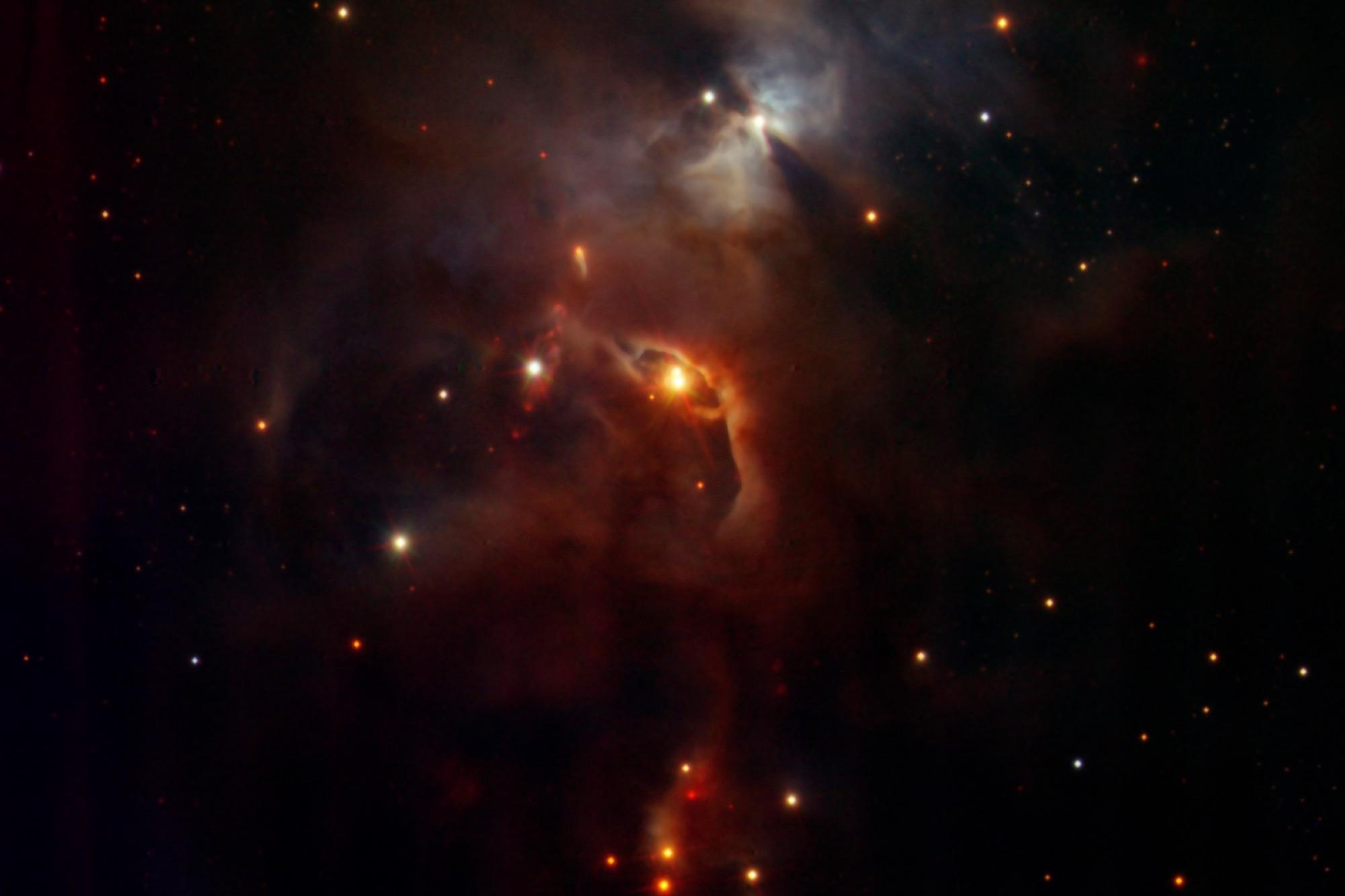A unique methane compound outside the solar system has been detected by a research team headed by LMU astrophysicist Basmah Riaz for the first time.
 Nebula in serpens. In this region of the sky, the LMU team discovered deuterated methane in a proto-brown dwarf. Image Credits: © European Southern Observatory.
Nebula in serpens. In this region of the sky, the LMU team discovered deuterated methane in a proto-brown dwarf. Image Credits: © European Southern Observatory.
Brown dwarfs are unique celestial bodies that occupy a sort of transitional position between stars and planets. Sometimes, astrophysicists name them “failed stars” as they do not have enough mass to burn hydrogen present in their cores and glow like stars. It is constantly debated whether the formation of brown dwarfs is just a scaled-down version of the formation of Sun-like stars.
The scientists are concentrating on the youngest brown dwarfs that are called proto-brown dwarfs. As they are still in the early formation stages, these dwarfs are just a few thousand years old. Astrophysicists want to learn if the gas and dust present in these proto-brown dwarfs appear like the composition of the youngest Sun-like proto-stars.
Here, the focus of interest is methane — a simple, yet highly stable gas molecule that, once formed, can be destroyed only by high-energy physical processes. Methane has been detected in many extrasolar planets. Earlier, methane has been serving a basic role in identifying and studying the properties of the oldest brown dwarfs in the Galaxy, which are many hundred millions to billions of years old.
Now, a team, headed by LMU astrophysicist Basmah Riaz, has clearly detected deuterated methane (CH3D) in three proto-brown dwarfs for the first time. This discovery is considered to be the first-ever clear detection of CH3D outside the solar system. This result was surprising.
Proto-brown dwarfs are dense and cold objects. For the same reason, these proto-brown dwarfs are challenging to study for methane signatures in the near-infrared. On the contrary, they can be easily observed in the wave range of millimeters. In contrast to methane, which has zero spectral signature in the radio domain due to its symmetry, deuterated methane (CH3D) could be seen at millimeter wavelengths.
The first detection of CH3D was more than just surprising because, with regard to the brown dwarf formation theories, proto-brown dwarfs are denser and cooler (about 10 K or less) than proto-stars. According to chemical theory, CH3D is favorably produced while the gas is warm (at temperatures around 20 to 30 K).
The measurements imply that at least a significant fraction of the gas in a proto-brown dwarf is warmer than 10 Kelvin, otherwise CH3D should not be there at all.
Basmah Riaz, Astrophysicists, Ludwig-Maximilians-Universität
A methane abundance estimate is offered to the scientists by the CH3D abundance measurement.
It is also surprising that while there is only one Sun-like proto-star identified until now where CH3D has been uncertainly identified, the LMU research team has confirmed the detection of CH3D in 3 proto-brown dwarfs. It implies that proto-brown dwarfs show a rich warm organic chemistry. It also means that these cool compact astrophysical objects might not be just a scaled-down copy of proto-stars.
The methane in the proto-brown dwarfs may or may not survive or retain such high abundance in the oldest brown dwarfs.
Wing-Fai Thi, Study Co-Author, Max Planck Institute for Extraterrestrial Physics
As a warm environment is preferential for producing more complex molecules, proto-brown dwarfs are interesting objects to look for these molecules in the years ahead.
Journal Reference:
Riaz, B., et al. (2022) First CH3D detection in Class 0/I proto-brown dwarfs: constraints on CH4 abundances. Monthly Notices of the Royal Astronomical Society: Letters. doi.org/10.1093/mnrasl/slac007.